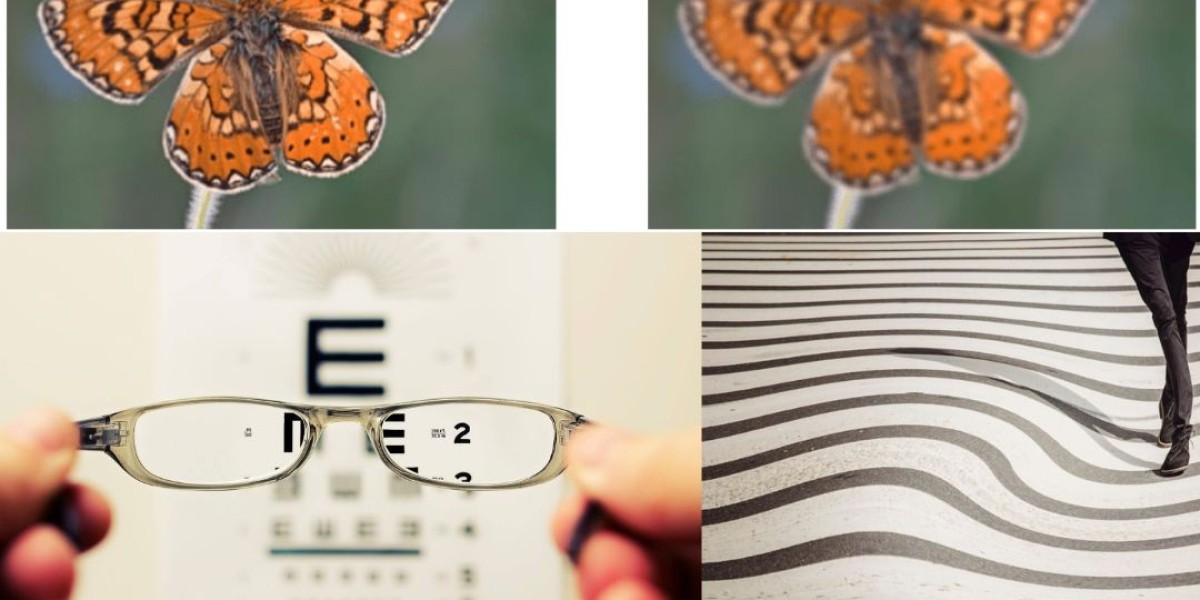Distorted vision is a visual condition that affects how you perceive shapes, lines, and objects, making them appear warped, bent, or otherwise altered. For those who experience it, distorted vision can be disorienting and impact daily activities like reading, driving, and recognizing faces. This blog will explore the causes, symptoms, and treatment options for distorted vision to help you understand what may be behind these visual changes and how they can be managed effectively.
What Is Distorted Vision?
Distorted vision is more than occasional blurriness; it’s a specific visual disruption where straight lines may appear curved or objects look stretched. While blurred vision can result from general refractive issues, distorted vision often points to a specific problem with the eye's retina, cornea, or the brain's visual processing.
Distorted vision can affect one or both eyes and vary in severity. Some people might notice only mild distortions, while others experience significant changes that make daily tasks challenging. Understanding the potential causes is essential for finding the right treatment.
Common Causes of Distorted Vision
1. Astigmatism:
Astigmatism is a common refractive error caused by an irregularly shaped cornea or lens, resulting in blurred and distorted vision. The eye’s shape creates multiple focal points instead of a single point, making objects appear stretched or skewed.
2. Macular Degeneration:
Age-related macular degeneration (AMD) is an eye disease that affects the central part of the retina (macula), leading to vision distortion. People with AMD may see straight lines as wavy or notice dark spots in their vision.
3. Keratoconus:
Keratoconus is a condition where the cornea thins and begins to bulge into a cone shape, causing light entering the eye to scatter and resulting in distorted vision. This condition often affects younger people and can progress over time.
4. Cataracts:
Cataracts occur when the eye's lens becomes cloudy, obstructing light and distorting vision. People with cataracts may experience hazy, blurred, or altered vision, especially in dim lighting.
5. Retinal Detachment:
Retinal detachment occurs when the retina pulls away from the back of the eye, affecting the clarity of vision and causing distortions like flashing lights, shadowing, or a "curtain" over the visual field. Retinal detachment requires immediate medical attention.
6. Diabetic Retinopathy:
Diabetic retinopathy is a complication of diabetes that damages the blood vessels in the retina. It can lead to blurry and distorted vision, floaters, and vision loss if left untreated.
7. Migraine with Aura:
Some migraines are accompanied by a visual aura, where individuals see zigzag patterns, flashing lights, or distorted shapes. These visual disturbances typically resolve once the migraine subsides.
8. Eye Infections and Inflammation:
Infections like uveitis or conditions that cause inflammation in the eye can lead to distorted vision. Inflammation can interfere with normal vision by causing swelling, pressure, or scarring within the eye.
Symptoms of Distorted Vision
Distorted vision can manifest in different ways, and symptoms may vary based on the underlying cause. Common symptoms include:
Straight lines appearing wavy or bent
Objects looking stretched, compressed, or warped
Difficulty focusing on objects, particularly close-up
Problems with depth perception or judging distances
Blurriness, double vision, or shadowing around objects
Visual auras, flashes of light, or halos
Hazy or cloudy sight, particularly in specific lighting conditions
If you experience any of these symptoms, especially if they develop suddenly, it’s essential to consult an eye care professional promptly. Early diagnosis can make a significant difference in treatment outcomes.
Diagnosing Distorted Vision
Diagnosis typically begins with a comprehensive eye exam to assess the general health of your eyes. Your optometrist or ophthalmologist may conduct additional tests to understand the root cause of your symptoms:
1. Visual Acuity Test:
Measures how well you see at various distances to determine if refractive errors like astigmatism contribute to distorted vision.
2. Amsler Grid Test:
The Amsler grid test is commonly used to detect distortions. Patients look at a grid of straight lines; if they appear wavy or missing in certain areas, it can indicate problems like macular degeneration.
3. Corneal Topography:
This test maps the shape of your cornea to detect irregularities or bulging, which may indicate keratoconus or other corneal abnormalities.
4. Ophthalmoscopy and Optical Coherence Tomography (OCT):
These imaging tests provide detailed images of the retina and macula, helping to diagnose conditions like macular degeneration, retinal detachment, or diabetic retinopathy.
5. Fluorescein Angiography:
This test involves injecting a fluorescent dye into the bloodstream to highlight blood vessels in the retina, helping detect diabetic retinopathy and other vascular issues.
Treatment Options for Distorted Vision
The treatment for distorted vision depends on the underlying cause. Here are some common approaches:
1. Corrective Lenses for Astigmatism:
Glasses or contact lenses can help correct astigmatism, improving the clarity of vision and reducing distortions. Some people may benefit from specialty contact lenses designed for conditions like keratoconus.
2. Medications and Injections for AMD:
Age-related macular degeneration can be managed with medications, including anti-VEGF injections that help slow vision loss. Lifestyle changes, like eating a nutrient-rich diet and avoiding smoking, may also help preserve vision.
3. Surgery for Cataracts and Retinal Detachment:
Cataract surgery involves replacing the cloudy lens with an artificial one, restoring clear vision. For retinal detachment, surgery can reattach the retina to the back of the eye, helping to preserve vision.
4. Laser Therapy for Diabetic Retinopathy:
In the case of diabetic retinopathy, laser treatments can seal leaking blood vessels and reduce swelling in the retina, preventing further vision loss.
5. Vision Therapy and Rehabilitation:
Vision therapy may benefit those with specific distortions caused by conditions like keratoconus or migraines. Therapists can work on exercises to help improve eye coordination and visual perception.
6. Managing Migraines:
For those with migraines, managing triggers and using prescribed medications can help reduce the frequency and intensity of migraines with aura, minimizing temporary visual distortions.
7. Anti-Inflammatory Treatment for Eye Infections:
If an infection or inflammation is causing distorted vision, medications like antibiotics or anti-inflammatory drops can relieve symptoms and restore normal vision.
Tips for Managing Distorted Vision
While treatment can often improve or manage distorted vision, here are some additional tips to help cope with visual disruptions in daily life:
Use Good Lighting: Proper lighting can reduce strain and help objects appear clearer.
Avoid Digital Eye Strain: Limit screen time or take breaks to reduce eye fatigue.
Wear Protective Eyewear: Sunglasses and safety glasses can prevent eye injuries and reduce glare.
Regular Eye Exams: Routine exams help detect and address vision changes early.
Manage Underlying Health Conditions: Conditions like diabetes and high blood pressure can impact eye health, so keeping them under control is crucial.
Conclusion
Distorted vision can be unsettling, but understanding its causes and seeking appropriate treatment can make a significant difference. If you experience persistent or sudden vision changes, don’t ignore them; consulting an eye care professional promptly can prevent further complications and improve your quality of life. By staying informed and taking proactive steps to care for your eyes, you can protect your vision and maintain clear sight.








